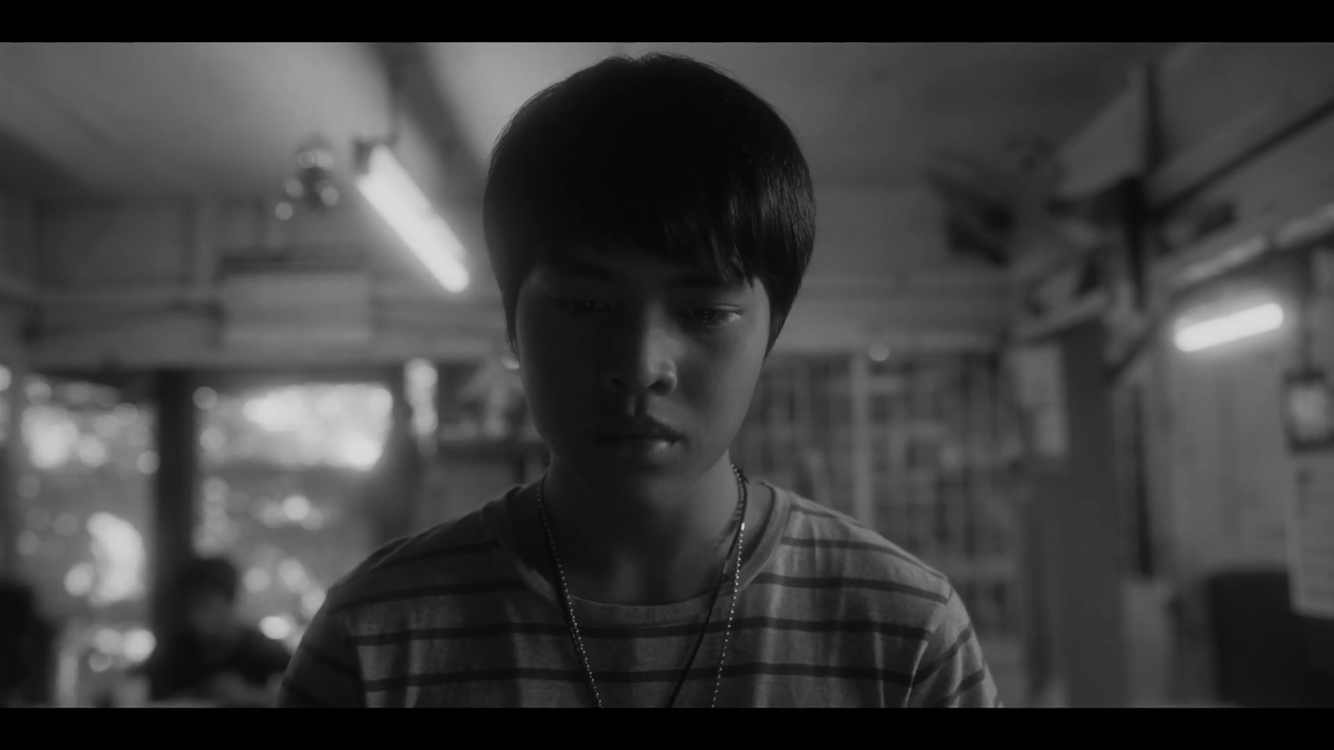By MHERYLL GIFFEN L. ALFORTE

IN A society stricken with judgmental eyes and constricting stigmas, diseased people are forced to keep things under wraps. With no one else to rely on but themselves, they are driven into a corner. In their attempt to find solace, they resort to things that ultimately led to their tragedy. Soon, it becomes apparent that their fate is not of their own making; rather, it is the unlistening ears of the society that should be blamed.
Kalel, 15 opens in a droning hospital hallway filled with people going about with their day. The camera then shifts to an unperturbed Kalel (Elijah Canlas) who is told by a doctor that he has contracted a virus. Next to him is his mother, Edith (Jaclyn Jose), who adopts an alarmed expression. The exact nature of Kalel’s condition is not fully disclosed, but from his mother’s reaction, it is implied that Kalel is suffering from something that is stigmatized in the eyes of others.
From the very beginning, director Jun Robles Lana has already established how the topic of HIV will be tackled. Unlike other similarly-themed films, Kalel, 15 shies away from how its titular character gets the virus. Instead, it focuses on its effects upon the individual so as not to sensationalize the subject. It is due to this masterful directing as well as the use of black and white color grading that Robles managed to bag the Best Director Award at the PÖFF – Tallinn Black Nights Film Festival.
The film follows the story of Kalel, a 15-year-old boy diagnosed with HIV. It depicts his struggles with the condition while simultaneously coping with the gradual deterioration of both his health and family. Without the presence of a guiding adult by his side, he tries to take matters in his own hands. However, there is only so much a lone teenager can handle before they break under the crushing weight of misplaced responsibilities.
Following Kalel’s introduction, the audience immediately gets a glimpse of his dysfunctional family. His mother is far more concerned with her affair with a married man. His half-sister, Ruth (Elora Españo), is also more dedicated to her drug addict boyfriend, Danny (Cedrick Juan). It is apparent that they are not in any way concerned or supportive of Kalel, leading him to not find any semblance of comfort in his own home. He refuses to open up and disclose to anyone in his family about how he contracted HIV. His distrust in his own family is further highlighted among scenes where he scrambles to hide his things whenever Edith invades whatever little space he has in their house.
Irony is evident in the film. Kalel is the illegitimate son of their town’s priest, Father George (Eddie Garcia), whose only involvement in his life is his monetary support to Kalel and his family. Kalel also goes to a Catholic school where he is expected to embody its conservative values. However, beneath his pristine and pure-faced façade is a hormonal high school boy with a barkada whose talks always revolve around sex.
Aside from his group of sex-driven guy friends, Kalel also has a display girlfriend, Sue (Gabby Padilla), as the finishing touch on his carefully constructed image. By night, Kalel strips all of these, literally and figuratively. The film gives the audience a glimpse of the gay subculture in social media, where Kalel is a somewhat popular figure based on the amount of engagement that he garners. He thrives on the lustful attention given by his Internet followers; most especially, the older men. From online strangers, he craves love and acknowledgement, which are things his own family cannot provide.
Kalel’s problems only worsen after Edith decides to elope with her new lover, abandoning him and Ruth. Furthermore, the pillars of his home start to crumble and Danny’s invasion and lodging in their house further irks him. Things are already bad enough, but it gets worse when Sue decides to bite on his lips to suck his blood, oblivious of Kalel’s condition. With this, his previously nonchalant attitude towards his disease changed when he realized how detrimental it could be to the wellbeing of others.
The story is gripping not only for its relevant social themes but also its ensemble of actors. Amid these actors stands Jaclyn Jose for her spectacular acting in embodying a mother who is negligent, vulgar and libidinous.
Canlas is also brilliant for bringing life into the titular role of the misunderstood Kalel. He does not overdo emotional scenes – he captures the emotions perfectly. Effort is evident in his portrayal of Kalel’s character because he has perfect control on how to deliver the rawness of each situation while also being able to encapsulate the youthful air of his character. These are evident among scenes featuring him alone; it gives off the feeling of a helpless and desperate child, making the audience sympathize with him. Canlas’ acting demands to be felt as he was able to represent the struggles of the youth who are likewise afflicted with HIV.
As the film progresses, the audience expects to learn how Kalel acquired the virus. However, the characters do not seem to properly talk about it. It is treated like a dirty secret – a taboo. This is highlighted when Edith strictly forbade him to even disclose his illness to Ruth. Moreover, Kalel’s romantic affairs, aside from the one with Sue, is only hinted at all throughout the film.
The entire film is in stark black and white which reflects Kalel’s dark and uncertain world. As he drowns himself in vices, he desperately struggles to find some hint of color in it. The monochromatic palette is also the filmmaker’s way of creatively establishing the mood without the use of colors. Additionally, there is also the creative use of the film’s aspect ratio which transitions from a 4:3 ratio into a square. While this change is disorienting at first, it soon finds its place in the midst of the film’s narrative. The frame getting smaller signals the change of tides in the protagonist’s life. It signifies the world closing in on a helpless young boy as odds continue to go against him.
Ultimately, Kalel, 15 criticizes the portrait of the predominantly-Catholic Philippine society and how its conservative values restrict people from acknowledging the mere existence of sex. This results in a vast number of misguided and miseducated individuals especially the youth. The taboo against sexuality leads to a stigma in which society refuses to lend support to those in need just like Kalel. As the film is seen through the eyes of a 15-year-old boy, it aims to be a wake-up call in the increasing HIV rate and how it affects the most vulnerable individuals of the society. F



